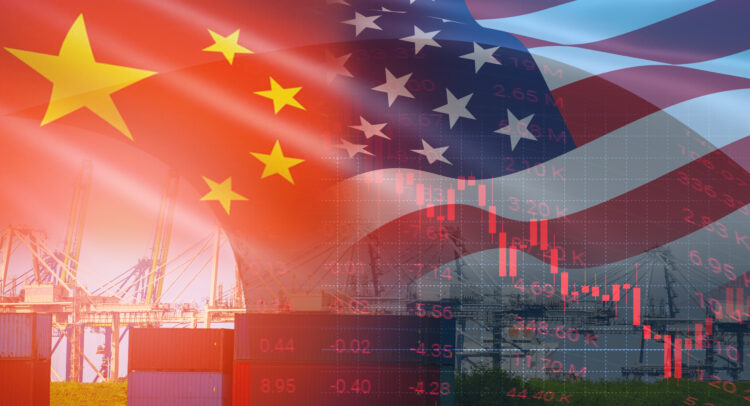The U.S. bond market has experienced significant turbulence this past week as trade tensions between the United States and China continued to escalate. U.S. Treasury bonds—traditionally considered among the safest investments in the world—are behaving more like risky assets, rising and falling alongside stocks and cryptocurrencies.
After President Trump announced steep tariffs on Chinese goods, bond yields surged while the dollar plummeted. The 10-year Treasury yield rose by a quarter percentage point in just six days, with the 30-year yield jumping by a third of a point—movements that bond market veterans describe as “jarring.”

China Selling U.S. Holdings?
China’s response to the tariffs has been uncompromising, with Beijing announcing it will increase tariffs on all U.S. goods from 84% to 125%. The Chinese leadership has shown little inclination to back down, publicly dismissing Trump’s tariffs as a “joke.” With levies on both sides reaching levels that effectively halt trade between the world’s two largest economies, analysts worry that further escalation could occur in other financial areas, including China potentially reducing its Treasury holdings.
China is the second largest foreign holder of U.S. debt, with an estimated $749 billion in holdings of U.S. Treasury bonds. Some speculate—though without concrete evidence—that sales by Beijing may have contributed to the sudden surge in long-term yields.
Risk-Free Rate Status in Jeopardy
The $28.6 trillion Treasury market serves as the lifeblood of the global financial system. Central banks and financial institutions worldwide hold vast quantities of Treasury bonds, and short-term Treasury debt is treated essentially like cash, often being referred to as setting the “risk-free rate” upon which all other debt is measured. The recent bond selloff essentially represents a decline in confidence in the United States itself.
Historically, nearly $2 trillion flows into U.S. businesses, banks, and markets from foreign investors annually. The US typically receives 41% of all global cross-border investments—double its share from the beginning of the pandemic. Moreover, international investors hold about 30% of U.S. public debt, up from 23% three decades ago.
However, recent global investment patterns are showing signs of change. The U.S. dollar hit a three-year low against the euro this week at 88 cents, reportedly because European investors are “repatriating capital to the eurozone.” Meanwhile, German bonds have gained ground as investors seek alternative safe havens.
How The Bond Market Is Potentially Influencing Policy
Market concerns appear to have influenced White House policy. Barron’s has reported that a White House official, speaking anonymously, revealed that the bond market disruption and worries about a Treasury auction contributed to Trump’s decision to pause some tariffs.
Analysts remain worried about lasting damage to confidence in the U.S. financial system, especially given federal cuts affecting the Treasury Department staff and other agencies responsible for maintaining financial stability. The trade war has created a counterweight to Trump’s tariff policy that will be difficult for the president to ignore—a reality recognized by both the market and China, with its hundreds of billions in Treasury holdings.
As markets reopen Monday, volatility is expected to continue as this high-stakes economic confrontation between the world’s superpowers continues to unfold.










